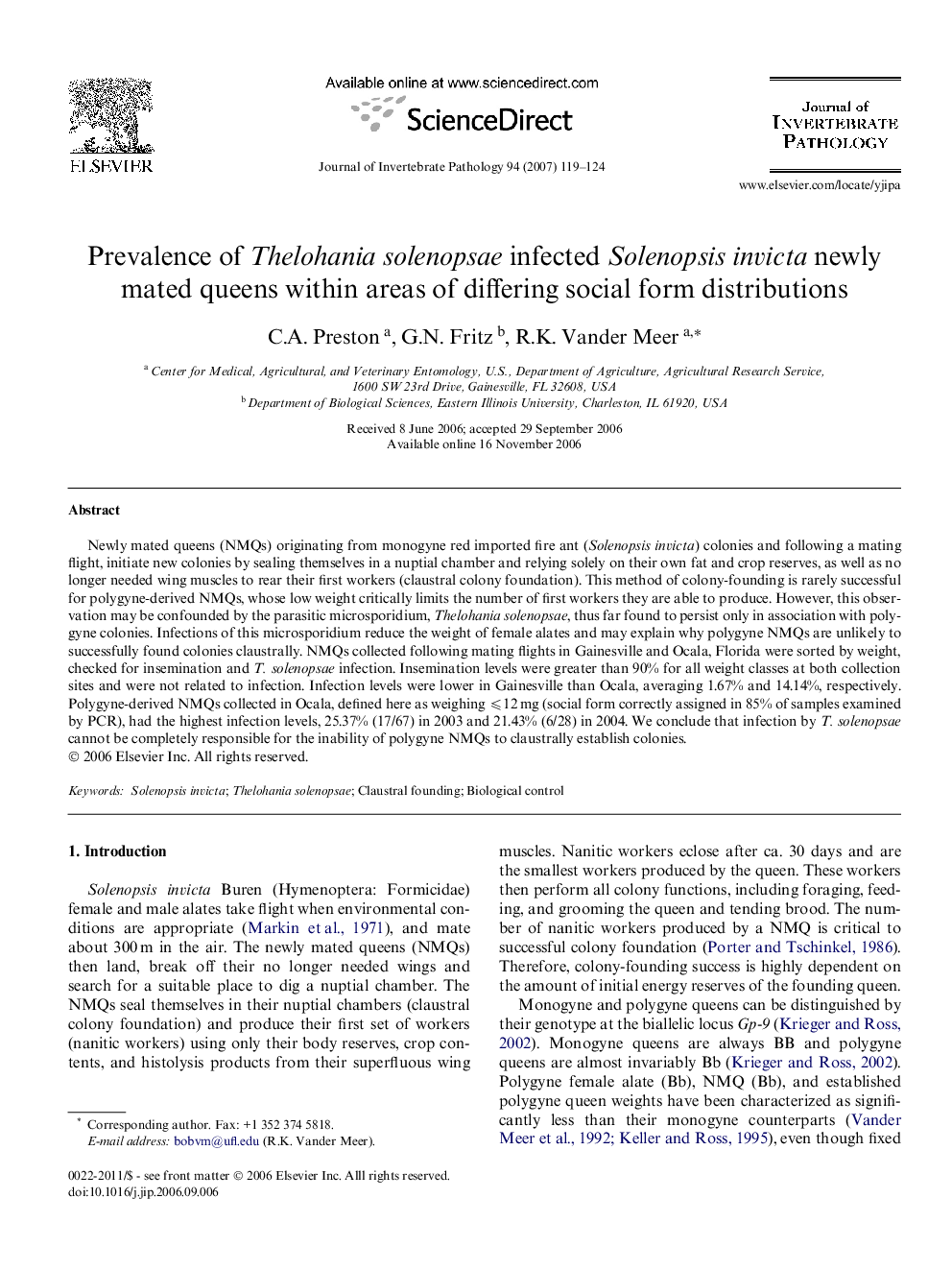| Article ID | Journal | Published Year | Pages | File Type |
|---|---|---|---|---|
| 4558825 | Journal of Invertebrate Pathology | 2007 | 6 Pages |
Newly mated queens (NMQs) originating from monogyne red imported fire ant (Solenopsis invicta) colonies and following a mating flight, initiate new colonies by sealing themselves in a nuptial chamber and relying solely on their own fat and crop reserves, as well as no longer needed wing muscles to rear their first workers (claustral colony foundation). This method of colony-founding is rarely successful for polygyne-derived NMQs, whose low weight critically limits the number of first workers they are able to produce. However, this observation may be confounded by the parasitic microsporidium, Thelohania solenopsae, thus far found to persist only in association with polygyne colonies. Infections of this microsporidium reduce the weight of female alates and may explain why polygyne NMQs are unlikely to successfully found colonies claustrally. NMQs collected following mating flights in Gainesville and Ocala, Florida were sorted by weight, checked for insemination and T. solenopsae infection. Insemination levels were greater than 90% for all weight classes at both collection sites and were not related to infection. Infection levels were lower in Gainesville than Ocala, averaging 1.67% and 14.14%, respectively. Polygyne-derived NMQs collected in Ocala, defined here as weighing ⩽12 mg (social form correctly assigned in 85% of samples examined by PCR), had the highest infection levels, 25.37% (17/67) in 2003 and 21.43% (6/28) in 2004. We conclude that infection by T. solenopsae cannot be completely responsible for the inability of polygyne NMQs to claustrally establish colonies.
